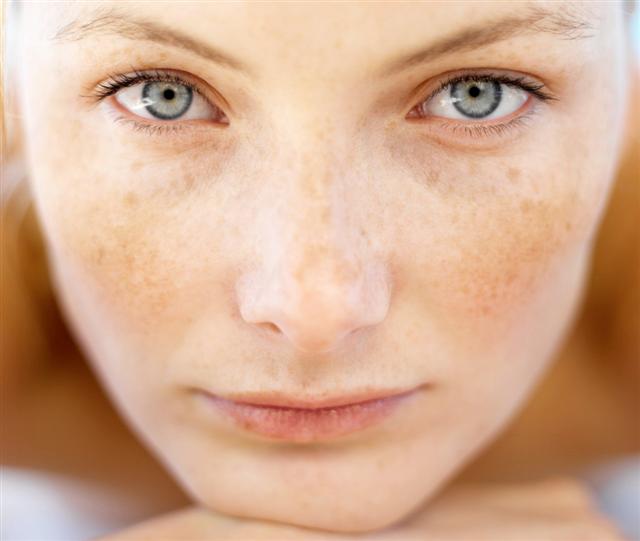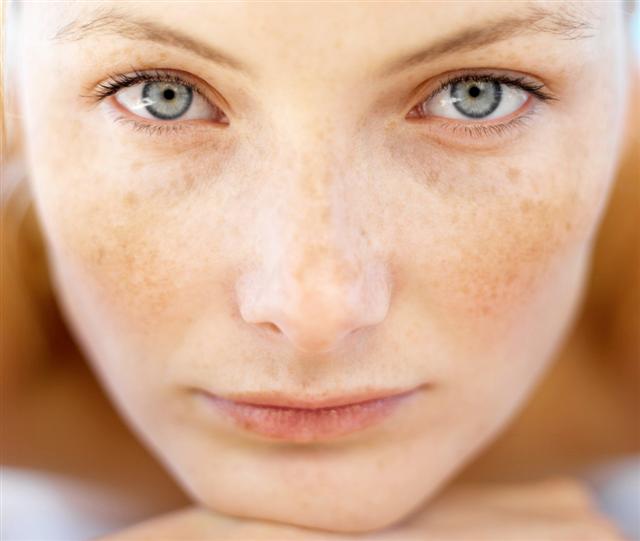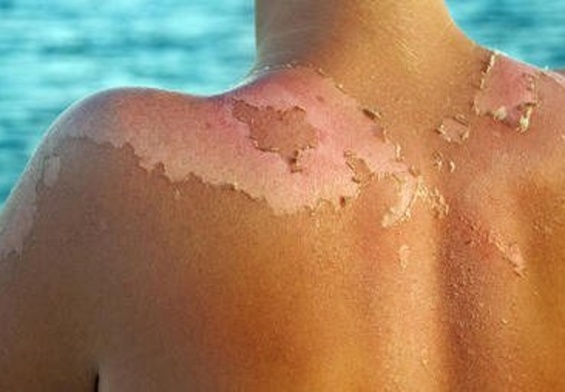 Solar lentigines (pronounced ‘len-ti-ja-nees’), more commonly called ‘sun spots,’ are dark spots on the skin. They often are caused by prolonged direct exposure to UV (ultra violet) rays from the sun. Though some people may also refer to them as ‘liver spots,’ which are associated with aging, the truth is that any of us can acquire sun spots regardless of age. Yes, it’s true that those of us who are over the age of 40 are more prone to them, but don’t let this fool you—if you’re under 40, you can still get sun spots. Following is information about sun spot treatment in New Jersey.
Solar lentigines (pronounced ‘len-ti-ja-nees’), more commonly called ‘sun spots,’ are dark spots on the skin. They often are caused by prolonged direct exposure to UV (ultra violet) rays from the sun. Though some people may also refer to them as ‘liver spots,’ which are associated with aging, the truth is that any of us can acquire sun spots regardless of age. Yes, it’s true that those of us who are over the age of 40 are more prone to them, but don’t let this fool you—if you’re under 40, you can still get sun spots. Following is information about sun spot treatment in New Jersey.
Sunspot treatment options
Though sun spots typically do not require treatment, many people who have them feel a need to treat them due to their ability to mar your appearance.
Creams:
Creams that lighten can be obtained with a prescription, but some can be used at home. Prescription grade creams can be used alone or with retinoids and a steroid in order to fade sun spots over time. Cream treatments can take time, anywhere from weeks to months. A broad spectrum sunscreen that has an SPF rating of 30 is recommended for use with lightening creams.
Laser therapy
Laser therapy works to destroy melanin-producing cells without also destroying skin surfaces. A number of sessions at a cosmetic center are needed for laser therapy to achieve lasting results in destroying sun spots. Following such treatment, sun spots will fade slowly. Laser therapy typically has few side effects, including some discoloration of skin in those with darker skin types. Consult with a cosmetic center near you to learn the benefits and risks.
Dermabrasion
Dermabrasion is among the most aggressive of the sun spot treatments, and this means it can achieve among the best results. For dermabrasion, a local anesthetic is necessary because a type of ‘sanding’ is done on the outer layers of skin. Following dermabrasion therapy, skin can be quite red and irritated, with several months needed for the skin to heal.
Cryotherapy
Cryotherapy, which is a means of freezing, is a procedure wherein a professional at a cosmetic center will apply liquid nitrogen or other freezing agent to the sun spots in order to destroy extra pigmentation in the skin. As the area of treatment heals, the skin will then appear lighter. Cryotherapy typically is used on a single sun spot or a small group of them. Freezing skin can temporarily irritate it, with rare instances of permanent discoloration or scarring occurring.
Apple Cider Vinegar:
If you’re looking for a home remedy, apple cider vinegar may be for you. Apple cider vinegar is directly applied to the skin alone, or you can mix it with the juice of an onion (which can be extracted by finely chopping or blending the onion and straining the juice). Mix equal parts of onion juice and apple cider vinegar and, using a cotton ball, dab it directly onto the sun spots. Leave on for at least 30 minutes. Typically, you must repeat this process once a day for 6 to 8 weeks in order to see gradual fading of sun spots.
Just like anything else in life, the best ‘treatment’ for sun spots is to prevent them in the first place. Important steps to take in order to prevent sun spots from appearing on your skin include using a broad-spectrum sunscreen. What does that mean? The term broad-spectrum is used by the United States Food and Drug Administration (FDA) for tests performed on sunscreens in order to provide proportional protection against UVA and UVB rays. These tests have been instituted by the FDA in recent years, largely in answer to the increased incidence in skin cancers. Find a sunscreen that is labeled ‘broad-spectrum,’ with at least an SPF of 30. SPF stands for ‘sun protection factor,’ which is the rating that tells how long you can stay in the sun without getting burned while you are wearing a particular sunscreen as compared to how long you can stay in the sun while you are not wearing it. For instance, if you are wearing a sunscreen with an SPF of 10, this means you can stay in the sun 10 times longer than you normally could without wearing it. (Remember to take into consideration how long it takes you to burn in the sun without a particularly sunscreen.) For more information about sun spots and how to treat them, contact a cosmetic center near you for a consultation.



